- Details
- Written by: Gianna Esquivel
- Hits: 978
Like with other spirits, there’s a division about how to drink mezcal. Many bartenders and mezcal lovers recommend drinking it neat to enjoy its original taste. But there are enthusiasts who could not resist mixing it and preparing tasty cocktails. Based on personal experience and taste, some traditional cocktails, like mojitos, get really boosted to an alternative and delicious level with mezcal.
Here you have 5 mezcal cocktails you can easily prepare for your friends to toast in a Mexican style.
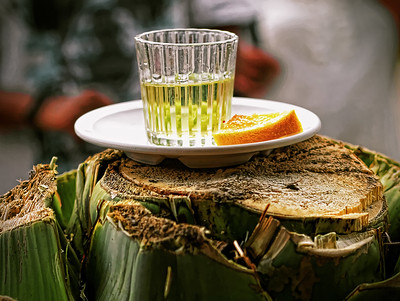
| Follow PackAndGo.info at: | |
| YouTube | @packandgo. |
| @packandgo.info | |
| X | @packandgoinfo |
| Bluesky | @packandgo.bsky.social |
| @packandgo.info | |
| TikTok | @packandgo.info |
Paloma with mezcal
Let’s start with a well-known cocktail, the Paloma. This is a very popular tequila cocktail (what is tequila?) but you will totally surprise your guests with its mezcal version. Tequila and mezcal have very different flavors. The smoky, earthy, floral, or fruity notes of mezcal (depending on the mezcal you choose) will make a big difference.
The protagonist of your ingredient list is mezcal (45 ml-1.5 oz). Choose the one you prefer and if you still don’t know how to choose one, check our article (All about the mezcal).
Then you need grapefruit (90 ml-3 oz) and lime (7.5 ml-0.25 oz) juices. Tonic water, salt, and a slice of grapefruit. Prepare a highball glass.
Get a shaker with ice and combine within it the mezcal, the juices and shake them up. Get a highball, rimmed with the salt, and add the amount of ice you like. Then strain the mixture. Fill the glass to the top with tonic water. And add the final touch, sit the slice of grapefruit in.
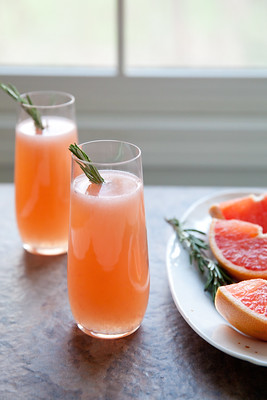
Mojito with mezcal
If you are a mojito lover, don’t take this as aggression against rum. We also like it! But you should give it a try to its mezcal version.
To prepare a mojito with mezcal you need peppermint or mint leaves (6 or more), fresh lime juice (30 ml-1 oz), white sugar (one teaspoon) or simple syrup (15 ml-0.5 oz), soda, ice, mezcal (45 ml-1.5 oz), and a long drink glass.
First, put the sugar in the glass. Like this, it will get mixed with the ingredients that are coming. Add ice, lime juice, mezcal, and peppermint or mint leaves. Grind a bit the leaves for them to release their aroma and taste, but don’t break them totally. They add taste but they are also part of the decoration. Fill the glass to the top with soda. Sit a slice of lime in the rim of the glass.
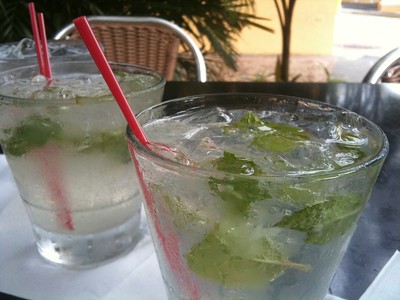
Strawberry frozen Margarita with mezcal
The already popular Margarita gets refreshed with this sexy mezcal version.
You need a Margarita glass or any glass with a wide rim for adding salt or sugar, what you prefer. Mexicans add a little bit of chili (Tajín) to this mix. Just run a lime around the rim of the glass and dip it into sugar or salt to get the rim coated.
Get in a blender, ice (2 cups), strawberries or strawberry syrup, lime juice (30 ml-1 oz), honey (15 ml-0.5 oz), and mezcal (45 ml-1.5 oz). Once the mixture gets slushy, pour it into the glass and sit a lime slice in the rim.
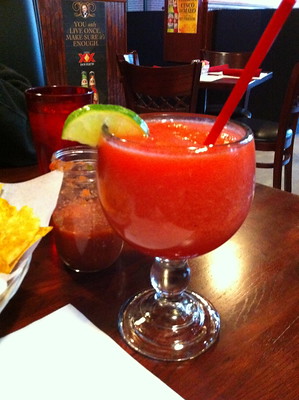
Sunset with mezcal
To think about sunset directly sends us to a chill mood, Summer, beach, and a delicious drink.
Get a Martini cup or a long glass and put it in the freezer 10 minutes before you prepare the cocktail. You can also add ice if you like.
Then, add orange juice (100 ml-3.4 oz), mezcal (45 ml-1.5 oz), grenadine (15 ml-0.5 oz), and finally, a splash of soda to get the red hue at the top (sunset). If you put the grenadine first, it will be at the bottom of the glass so you will get a Sunrise cocktail instead. If oranges are not sweet enough, you can add sugar or simple syrup. To decorate, get a couple of orange slices or a cherry and sit them on the rim.
Now enjoy a fresh mezcal cocktail, a sunset with a unique smoky accent. Cheers!
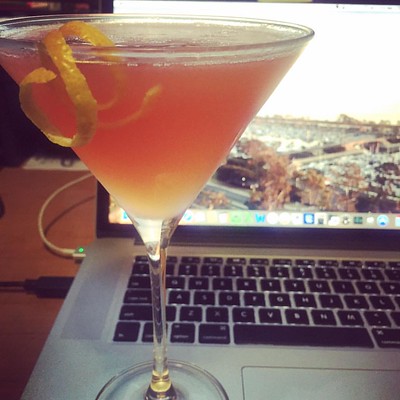
Tamarind, mole, and mezcal cocktail
If you reached this point is because you are an adventurous drinker who is looking for more. Well, we have more for you. A cocktail that offers you the taste of Mexico in every sip.
You will need a mole. There are many types of the delicious mole in Mexico. For this cocktail, we recommend you buy black mole. Its taste includes spicy (cinnamon, chili, anise), peanut, and chocolate notes.
Get ready a Margarita glass or any glass with a wide rim. Mix a bit of salt with sugar and sesame. Run a lime around the rim of the glass and dip it into the mix to get the rim coated. Add ice to the glass.
Then take a blender and add the mole (1 teaspoon) and tamarind syrup (59 ml-2 oz). Pour this into the glass. Then add mezcal (45 ml-1.5 oz) and fill the glass to the top with soda.
Get a slice of lime or a couple of them and decorate the rim.
This is a really exotic Mexican combination. Tamarind acidity, combined with the ancient tradition and deep taste of mole, and mezcal produce a memorable pleasure in your palate.
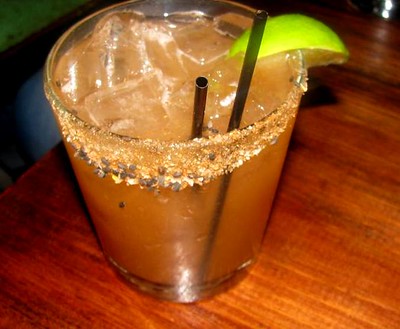
We recommend you use fresh fruits and juices for preparing these cocktails. But if you can't get them, you can buy syrups in the supermarket. The main objective is not to stop the fun!
Conclusion
Mezcal is a delicious and interesting Mexican spirit. Be sure that drinking it neat or in a cocktail will be a pleasant experience. The last decision about which way is better is totally yours! Share your comments and experience with PackandGo.info ! Cheers!
If you like to know more about mezcal, check our article "Mexican mezcal is a sip of heaven - Interesting facts about mezcal".
| Follow PackAndGo.info at: | |
| YouTube | @packandgo. |
| @packandgo.info | |
| X | @packandgoinfo |
| Bluesky | @packandgo.bsky.social |
| @packandgo.info | |
| TikTok | @packandgo.info |
- Details
- Written by: Gianna Esquivel
- Hits: 1533
If you haven’t had mezcal yet, that is what Mexicans and mezcal enthusiasts will tell you. “If you haven’t tried mezcal, you haven’t lived”. I can’t be objective here. I totally agree with them. Mezcal is a delicious beverage. Once my palate tried its smoked notes, it got in love with them. For me, there’s no way back! I want mezcal in my life.
Mezcal is a Mexican agave spirit that has existed for centuries but now has become more popular. There’s no doubt, agave is a very generous plant. It is the source of really delicious alcoholic beverages that are icons of Mexican culture. Tequila (What is tequila?) is very well known around the world and mezcal has arguments enough to convince and get your palate and heart!
Let’s explore the origin, features, and more aspects that can make you crave a delicious mezcal.

What is Mexican mezcal?
Mexican mezcal is a popular spirit distilled from agave. It is a beverage with a specific smell and flavor, colorless or slightly yellowish when it’s rested, aged, or when it’s abocado.
Abocado refers to the addition of one or more natural products, flavorings, or colorings allowed in the corresponding legal provisions to soften its flavor, without resting it or aging it.
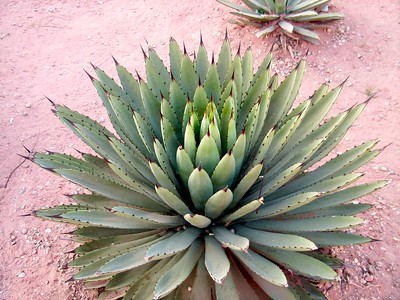
How does mezcal is produced?
There are different ways to produced mezcal. Talking about the traditional (artisanal) process, in general terms, it involves rough and roasting the agave leaves. Once the heads or pineapples (pencas) are cleaned, they get grinded.
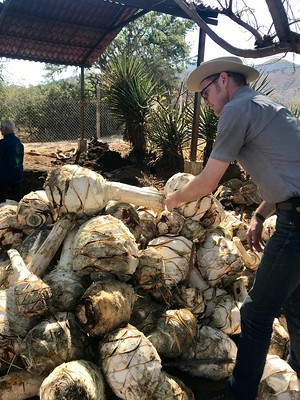
Agave hearts get cooked in pits in the ground then grinded to extract their juice. Then the liquid goes to fermentation and gets distilled twice in copper stills* or clay pots.
* An alchemical still or alembic is made of two vessels connected by a tube. It’s used for liquid distillation.
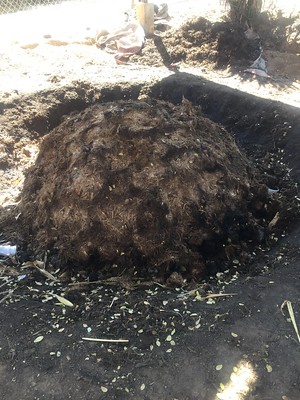
Tequila is produced in a similar way, see the difference here.
Is mezcal Mexican? - Mezcal origin
Yes, mezcal is an ancient Mexican spirit. According to some studies carried out by anthropologists from UNAM (Universidad Nacional Autónoma de México), this agave beverage was distilled by Mexicans in clay pots since 400 BC.
Later, the Spanish conquerors brought with them the distillation process (16th century). They realized Mexicans produced alcoholic beverages from agave and try it, but using their distillation process. If you consider the wide meaning of mezcal, every spirit distilled from agave, then the first mezcal got produced.
| Follow PackAndGo.info at: | |
| YouTube | @packandgo. |
| @packandgo.info | |
| X | @packandgoinfo |
| Bluesky | @packandgo.bsky.social |
| @packandgo.info | |
| TikTok | @packandgo.info |
The homemade production of mezcal is ancient in Mexico, but it became more important until the Mexican Revolution (1910-1920). However, its growth was very slow. As an industry, it started in the 18th century, when the distillation process got well known and popular in Mexico. The production of mezcal in an artisanal way was illegal, so everything was made clandestinely. The creation of the official Mexican standard and the appellation of origin (1994) were important steps to safely promote mezcal nationally and internationally.

Learn more interesting facts about mezcal here!
You can also check FAQ about tequila.
Are there different types of mezcal in Mexico?
Yes, there are different types of mezcal in Mexico. Types are defined by factors like the specific variety of agave used for its production, its aging time, production process, and what the Mexican Official Standard (NOM) says.
Based on the chosen agave to produce mezcal, the taste and smell you get. Tobalá, espadín and madrecuixe are three popular agave varieties used to produce mezcal.
Considering the aging process, there are three types of mezcal: young, aged, and extra-aged.
- Young mezcal is obtained directly from the distillation process. It’s light yellow color.
- Aged mezcal is stored in white oak or common oak barrels for at least two months. As a result, it gets a golden yellow color.
- Extra-aged mezcal has a maturation process of a year as a minimum. It gets an ocher brown color.

Based on its production process there’s minero (traditional), pechuga (breast), and abocado.
- Minero is the traditional mezcal. Its production follows an artisanal process that doesn’t involve electronic devices.
- Pechuga (breast) is produced following an ancient recipe from the Mexican state of Oaxaca. It involves a third distillation process in which a chicken, turkey, or rabbit breast is used to add smoky notes. The breast is hung inside the copper still so that the distillation steam comes into contact with it. That hot steam cooks the breast until it disintegrates. There are many recipes. Before the third distillation, other ingredients such as mole, tamarind, lemon, almond, walnut, guava, and more can be added.
- Abocado. It’s a type of mezcal that gets softened through the addition of natural ingredients like seeds, flowers, or maguey worms. Yes, the popular mezcal worms!
The Mexican Official Standard, NOM, establishes two mezcal types, pure and not pure. In the pure mezcal, 100% of the carbohydrates come from agave distillate. Not pure mezcal contains 80% agave carbohydrates and 20% carbohydrates from other substances allowed by the same organization.
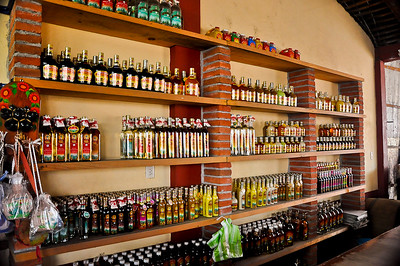
What does mezcal taste like?
Mezcal tastes like heaven! Ok, let’s answer objectively. Mezcal taste varies based on the agave that is used to produce the mezcal, its production process, and its aging time.
Mezcal’s most famous signature is its smoky taste. Those notes and their depth are the results of the way the agave is cooked (in pits in the ground). And smokiness can be emphasized through processes like the third distillation pechuga (breast) type adds to the mezcal production.
But mezcal flavor is not only smoky. It feels smooth and It can be earthy, sweet, fruity, or floral too.
Its flavor is smooth, finely oiled this combines with a specific and very pleasant aroma. In its aromas, very nice ingredients can be also present. Cocoa, light smoke, orange blossom, ripe fruit, etc.
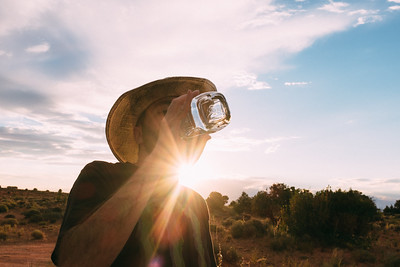
What is the best way to drink mezcal? - How to drink mezcal in Mexico?
Mezcal flavor is a combination of nice elements. The objective is to give time to your mouth and palate to enjoy every one of its notes. Based on this, what Mexican bartenders recommend to drink mezcal is to slowly kiss it. Meaning you should drink it in small sips. That's considered the best way to drink it. Besides you can accompany it with some sips of water just to hydrate and clean your palate, for it to be ready to completely enjoy the next sip of mezcal, together with all its rich and tasty notes and aromas.
If you are into cocktails, these are the 5 best mezcal cocktails you can get.

Does mezcal go with chocolate?
Yes, mezcal goes with chocolate and life! Ok, again let’s answer objectively. Mezcal indeed combines well with chocolate. Experts on food pairing strongly recommend drinking mezcal while enjoying small pieces of chocolate, like truffles, tamarind, and sweets, like mazapán. They assure this combination produces tasty explosions in your palate. Just do it in proper order. First a sip of mezcal, after the chocolate or sweet.
You can also add a bit of mezcal to a cup of hot chocolate. This is a warm choice for Winter.

Conclusion
Mezcal offers to your palate a very sexy taste and experience. Mezcal is a tradition, a delicious sip of Mexico, variety of tastes and aromas. Mezcal is a temptation we recommend you not to resist. Remember, if you haven't had mezcal, you haven't lived!
Share your experience with us:
| Follow PackAndGo.info at: | |
| YouTube | @packandgo. |
| @packandgo.info | |
| X | @packandgoinfo |
| Bluesky | @packandgo.bsky.social |
| @packandgo.info | |
| TikTok | @packandgo.info |
- Details
- Written by: Martin Pramatarov
- Hits: 2093
Have you ever wondered how is tequila made? What plant do Mexicans use to create this alcohol drink? How many processes does the blue agave need to become a tequila? Today you will learn all of that and more!
If, by any chance, you don't know what tequila is, here you can read more about it.

First step of producing tequila. Planting of the blue agaves plants
It takes around 7 years until the agaves are ready to be used for tequila production. In some cases, the plants grow slowly and it can take up to 12 years!
Harvest the agave for tequila
The special type of field workers called "jimadores" will use special knives called coa, to remove the leaves of the agave plants and get just the bulb called piña. The piña is the one used for tequila.
Bake the agave piñas
First, the agave piñas are cut in two and baked. The baking is needed so the starchy sap inside of the piñas and turn into fermentable sugar. The tequila factories use ovens called "hornos" where the agave piñas are baked with steam for around 24 to 48 hours.
| Follow PackAndGo.info at: | |
| YouTube | @packandgo. |
| @packandgo.info | |
| X | @packandgoinfo |
| Bluesky | @packandgo.bsky.social |
| @packandgo.info | |
| TikTok | @packandgo.info |
The sugar extraction
After the agave is baked, it needs to be shredded to release the sugar inside it. The traditional tequila method involves a mill called Tahona with is basically a huge turning rock, that turns in a circle and crashes the baked agave piñas until their release the sugar syrup. Modern tequila makers use another mechanical method of shredding the piñas, but still, the traditional method is used.
Fermentation
The agave juice that is extracted is called "aguamiel" (honey water). The sugars inside it must fermentate and for that process, the tequila producers are adding yeast to it. Now, depending on if it will be 100% agave tequila or mixto tequila (mixed) you will have a bit different process. In pure tequila, you don’t use any additional sugars, while in the mixto tequila you can add different sugars up to 49%. The fermentation takes between 1 and 4 days and it happens inside wood or stainless steel containers. The agaumiel is well oxidated so that the fermentation can run smoothly. The temperature is also controlled because the process stops if it becomes too hot (above 40 degrees centigrade). In the end, you will have a liquid called mosto with 3.8 to 6 % alcohol.
Distillation
Now it is time to increase the alcohol content through a distillation process. The mosto is distilled twice. The first one leaves alcohol called ordinario (20-25 % alcohol), and the second is already a tequila (55-75 %).
Aging the tequila (optional)
All tequila is aged for at least 14 to 21 days. Silver tequila or Blanco tequila is aged for the minimum time. Aged tequila comes in three types: reposado (“rested,” aged for two months to one year), añejo (“aged,” aged for one to three years), and extra añejo (aged for over three years). To produce a more aged tequila, the distilled Blanco is put into aged oak barrels, which gives the tequila a golden color. There is also a fifth kind of tequila called Oro (“gold”), which is a mix of silver tequila and reposado tequila.
Learn more interesting facts about the tequila drink here.
Blending and additional essence
In some cases, tequila producers add extra ingredients and flavors such as caramel (for darker color), glycerine, aromatizers, flavor, sugar syrup, oak extract, and more.
Filter and dilute
The tequila can have between 35 and 55 % alcohol so at this stage the tequila could be mixed with demineralized water and filtered with charcoal or cellulose. The tequila that Mexican producers sell in the USA is 40 %, on the South African market is 43 %, in Europe 37.5%, and between 35 and 38% in Mexico.
Bottle the tequila
Now it is the last part, bottle the tequila and put the tags on. It is ready to hit the shelves.
"How tequila is made?" video
It is a lot easier to see than to imagine all of the processes. See the following video, and you will understand the process of tequila making in detail.
Outro
See, it is a really long process, but the final result, the delicious tequila, makes it all worth it. Next time when you are drinking a glass of tequila, please take a moment to think about it, and say cheers, to all the people that were involved in the tequila creation.
If you like tequila, you will for sure love mezcal. What? You don't know what mezcal is? Here we have a few very useful articles for you:
If you haven’t tried a mezcal, you haven’t lived!
Mexican mezcal is a sip of heaven - Interesting facts about mezcal
Share your experiences with us!
| Follow PackAndGo.info at: | |
| YouTube | @packandgo. |
| @packandgo.info | |
| X | @packandgoinfo |
| Bluesky | @packandgo.bsky.social |
| @packandgo.info | |
| TikTok | @packandgo.info |
- Details
- Written by: Gianna Esquivel
- Hits: 2237
PackandGo.info is an invitation to explore the world and different cultures. There are different ways to reach those objectives. Food and drinks are some of our favorite.
We already have shared with you our love for Mexican mezcal. And happily, some of you agree with us about how delicious the spirit mezcal is. Others are curious and asked more details about it. That’s why we are back here to provide more interesting facts about mezcal.
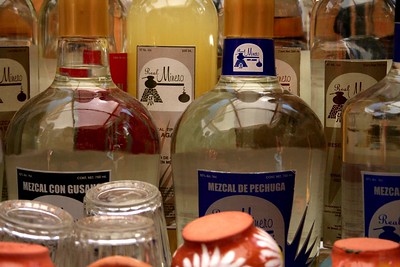
What does mezcal mean?
The word mezcal means cooked agave. It comes from the Nahuatl language. Mezcal word is used in Mexico to refer to all spirits distilled from agave plants (there’s a wide variety of them), without considering at this point, if they have the legal certification to be called mezcal or not. It’s an umbrella term to group beverages like raicilla, bacanora, sotol, and tequila. And mezcal is also used to point directly to a specific and certified Mexican spirit of artisan origin.
Pulque, another popular Mexican beverage, is not a mezcal because it’s produced with agave but it’s fermented, not distilled like the others we mentioned.
Learn more about mezcal's taste and how it is produced here!
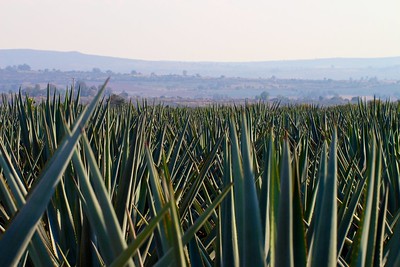
What’s agave?
The agave is an endemic Mexican plant. Since pre-Hispanic times, the agave and its different varieties have been used due to their medicinal properties, to build structures such as roofs and walls, channels to conduct water, to produce paper, fabrics, ornaments, and of course, alcoholic beverages such as aguamiel and pulque. Already from that time, the plant was fully exploited. Its spines or spikes are used in rituals and as sewing needles. Its flowers were food, part of different dishes of the time.
Agave’s native environments are the arid, hot, and even tropical regions along the American continent. They are plants with large rosettes made up of fleshy and strong leaves.
| Follow PackAndGo.info at: | |
| YouTube | @packandgo. |
| @packandgo.info | |
| X | @packandgoinfo |
| Bluesky | @packandgo.bsky.social |
| @packandgo.info | |
| TikTok | @packandgo.info |
Mexico has approximately 200 species of agave. Only between 12 and 15 are used to produce mezcal. Each mezcal is associated with a species of agave and a specific region.
Commonly, the agave to distill mezcal is a plant with long and fibrous lanceolate leaves, bluish-green. The pineapple or head, which includes the stem and the base of its leaves, is what is used to make mezcal. The maturation process of the plant takes between seven and ten years. Crop cycles are different in each region.
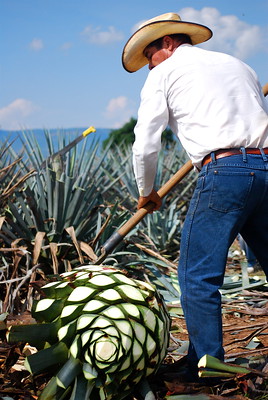
What’s the difference between agave and maguey?
There’s no real difference between agave (agaves, plural) and maguey (magueyes, plural). They are ways to call the same variety of plants. Agave is the scientific name defined by the naturalist Carlos Linneo, in 1753 for these plants.
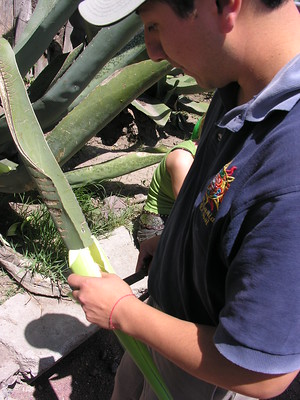
When the Spanish conquerors arrived in the American continent they found agaves and for them, at least at first glance, they were similar to the aloe plants the natives of the Antilles named maguey. So they used the same name. Before the Aztecs called it metl, the Zapotecs named it toba, and Mayas, ki.
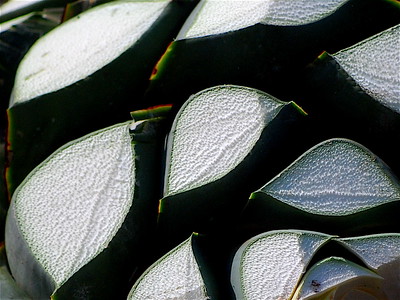
Why do Mexicans drink mezcal with orange?
There are different recommendations people give to have a better experience while drinking mezcal. A popular one is to drink it accompanied by orange slices, seasoned with salt mixed with pulverized agave worms, and ground chili peppers. Worms can sound strange or disgusting but they are tasty and safe for your health. These worms naturally live in the agave and the only thing they eat, day after day, is agave and its juice. They are mezcal worms!
The objective of drinking mezcal with orange is to make it lighter for the palate. This makes the experience more pleasant because it enlarges the experience through a gourmet touch. Besides, it's good for beginners or people not very used to drinking alcoholic beverages.
If you are into mixology, here we have some great mezcal cocktails for you!

What is worm salt for mezcal?
It’s salt mixed with worm and chili. It was created in the Mexican state of Oaxaca and it was part of the Aztec emperors' menu. It’s prepared following the pre-Hispanic recipe and through artisanal processes.
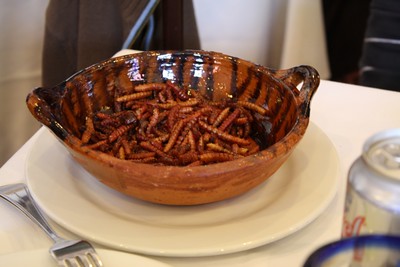
Adult agave worms are collected, mainly between July and December. The worms are dried and ground to mix with chili and salt. The mixture is dry in the sun and is pulverized. In this way, a powder with brown and red tones is obtained, with an intense and pleasant flavor. It is widely used to accompany mezcal and fresh fruit, but also as a spice in Mexican cuisine, gourmet cuisine included.
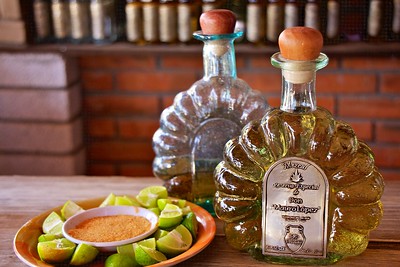
Can you take shots of mezcal?
It is up to you. Yes, you can take shots of mezcal but it’s not a recommended way to enjoy this spirit. You will get drunk faster but you will miss a lot of the tasty experience if you just pour it directly to your throat. Mezcal is a spirit to be enjoyed sip by sip. This is the way to feel the taste and aroma of its ingredients, its consistency, texture, and its whole body.
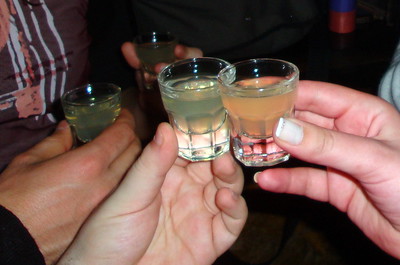
What’s the difference between mezcal and tequila?
Shortly answering, the difference between mezcal and tequila (What is tequila?) is the taste. Both spirits have different flavors. And this is the result of several factors. Agave varieties used to produce mezcal are different from the ones used to produce tequila. They belong to different Mexican regions. The production process of these beverages and the tools or machinery (like ovens) involved are also different.
Does mezcal taste like tequila?
Not at all. Mezcal does not taste like tequila (FAQ about tequila). Both are iconic Mexican beverages produced from agave. But the types of agave to produce each beverage are different, just like their corresponding production processes and recipes.
Does mezcal have to be made in Mexico?
Mezcal is a Mexican beverage and legally it has to comply with the Mexican Official Standard (NOM) to be certified as mezcal so it can be distributed under such denomination.
In a wider view, there are around 200 different varieties of agave growing into arid and semiarid zones in the American continent, specifically Mexico, the South of the US, and the Caribbean. If a proper variety to produce mezcal grows somewhere out of Mexico and someone has the expertise and tools to produce, technically it could be made elsewhere. For selling and exporting the product for sure you should check legal aspects more in detail.

Is mezcal cheaper in Mexico?
Possibly yes, mezcal can be cheaper in Mexico. The reason is if you buy the Mexican spirit in another country for sure there will be importation taxes involved. Just to give an example, in some American shops, Mexican mezcal bottles from regular brands can start at 200 USD. While top brands and types in Mexico can cost from 150 USD to 200 USD.
Is mezcal dangerous?
Mezcal is not dangerous if it’s properly produced and if it’s certified. As we already explained, mezcal has been distilled in Mexico since 400 BC. It has been a long time a homemade spirit. In the past, the lack of regulation and existence of an official standard originated some accidents. When mezcal is not produced correctly, methanol can be part of it, and it’s a toxic alcohol that based on the amount that is consumed can get people blind and dead.
Ethanol is alcohol too but it’s the one that should be present in fermented beverages in concentrations from 5% to 20% in wines and beer, up to 40% in vodka, whisky, tequila, etc. The human body can only process from 10 to 15 milliliters of ethanol every hour. More than this can be lethal.
So methanol and ethanol are types of alcohol but they are not the same.
That’s why entities in charge of people to respect the official standards to avoid risks were created. Buy a certified mezcal and you will be safe.

Where in Mexico is mezcal produced?
Nowadays, there’s an Official Mexican Standard and appellation of origin to regulate and protect its production in the Mexican states of Oaxaca, Estado de México, Morelos, Aguascalientes, Zacatecas, Tamaulipas, Puebla, San Luis Potosí, Michoacán, Guerrero, Guanajuato and Durango.
How to identify certified mezcal?
To identify certified mezcal looked for this information in the bottle’s tag. There, the appellation of origin must be shown to point to the Mexican state in which mezcal was produced. Besides, the bottle must have the hologram issued by the Mezcal Regulatory Council (CRM), which endorses the certification of the mezcal. Like this, you can confirm that the mezcal bottle you want to buy complies with the quality and production standards.
Can I bring mezcal from Mexico?
Yes, you can bring mezcal to your country from Mexico. You can buy mezcal online. And you can take it with you from Mexico on the airplane. You just need to check the policies of your airline. Usually, they seem to allow 5 liters of alcoholic beverages in the checked baggage. If you exceed this limit, you should declare them and pay extra taxes. But this can change from country to country and in the different airlines.
Do you refrigerate mezcal?
As a result of its origin and production process, mezcal has many natural congeners. They are essential components of mezcal’s flavor and chilling dulls them. Better avoid the fridge, freezer and skip the ice unless you are preparing a cocktail.
How to preserve mezcal?
Preserve mezcal by storing it in dry and cool areas, protected from direct sunlight or heat. Once it’s opened, keep it tightly closed when you don’t consume it. These practices can make longer the life and quality of your mezcal.
Experts say when the mezcal bottle is opened, the spirit starts a slow evaporation process that, after time and based on the storing conditions, can affect its flavor. They say an opened mezcal bottle properly stored can keep its quality around 9 months.

Conclusion
If you like spirits, you should give mezcal a try. It’s not only alcohol but a complete and pleasant experience for the palate. The ingredients used to produce the mezcal, the way to prepare it, the kind of agave, time, everything gets reflected in the taste of the spirit. Mezcal is a delicious sip of Mexico!
Share your experience with us:
| Follow PackAndGo.info at: | |
| YouTube | @packandgo. |
| @packandgo.info | |
| X | @packandgoinfo |
| Bluesky | @packandgo.bsky.social |
| @packandgo.info | |
| TikTok | @packandgo.info |
- Details
- Written by: Martin Pramatarov
- Hits: 1855
For sure you have plenty of questions about your favorite Mexican drink, the tequila. Here we will answer all of them. Every question about tequila answered! We live in Mexico, so all the information comes straight from the source.

Where does tequila come from?
The tequila comes from the town of Tequila in the Mexican state of Jalisco. According to the Mexican Tequila Standard, these are the only Mexican regions that can produce tequila – Jalisco, Guanajuato, Michoacán, Nayarit, and Tamaulipas.
Where does the name tequila come from?
The alcohol tequila got its name from the town of Tequila, which is located in Jalisco state in Mexico. It was first produced there at the beginning of the 17th century.
When tequila was invented?
Tequila was invented in the 16th centuries thanks to the mix of Spanish knowledge about distillation and the Aztec traditions of creating alcohol from agave with their pulque drink. It started to get popular at the beginning of the 17th century when tequila started to be produced in factories.
| Follow PackAndGo.info at: | |
| YouTube | @packandgo. |
| @packandgo.info | |
| X | @packandgoinfo |
| Bluesky | @packandgo.bsky.social |
| @packandgo.info | |
| TikTok | @packandgo.info |
Can tequila be made outside of Mexico?
No. Tequila can be produced only in Mexico and only inside a specific region, near the town of Tequila. Another limitation is the blue agave plant. It is the only plant that can be used for tequila.
What is tequila made from?
The tequila is produced from blue agave plants. The bulbs of the blue agave are baked, and after that, they pass several processes, including double distillation, until they become a true tequila. In the process, producers can add oak extract, sugar syrup, coloring like caramel, and water. If you want to see the complete process of how the tequila is made, click here.
Can tequila freeze?
A typical tequila with 35 % alcohol can freeze at around -20. The exact point of freezing will depend on the alcohol percentage. So, a typical tequila won’t freeze inside an average freezer.
Tequila is not supposed to be put in a freezer. You won’t be able to smell its aroma and enjoy fully its taste. Of course, you can do whatever you like with your drink, but true Mexicans don’t cool their tequila.
Can tequila go bad?
If the bottle of tequila stays closed and there is no structural damage to the bottle, it won’t expire. It can last centuries if preserved well.
When the bottle is already open, the tequila could go bad after around 6 months to a year. If you open a tequila, it is best to enjoy it, before this period so you don’t suffer from any negative effects of a spoiled tequila.
If you leave the tequila open for a long time, it will change its color and taste, caused by the oxidation.
What tequila is the best?
The best tequila is 100% agave Extra Añejo tequila. It is the ultra-aged tequila from a 100% blue agave plant without any additional sugar added. This tequila will be harder to find, so you will need to go to a special alcohol store to get one, and it will be more expensive. But it is worth it.
What tequila is used for margaritas?
Tequila Blanco a.k.a. Silver tequila is the preferred tequila for margaritas and other cocktails. This is the most economical tequila, it usually has no additional color or extra oak taste so it is perfect for mixing.
How tequila is served?
If you ask for tequila in Mexico, in a restaurant, it will be served straight in a small glass.
In Mexican bars, or abroad, the tequila is served as a shot with a slice of lemon and salt.
How to drink tequila?
Drinking neat tequila
Choose a more premium tequila like tequila reposado, tequila añejo, or tequila extra añejo. Check that the bottle says 100% agave, to be sure that it is a top-quality tequila. The tequila should be consumed at room temperature. Drink the premium tequila slowly and enjoy the deep taste.
Drink tequila with salt and lemon
For all the party-goers this should be a well-known method. Pour the tequila into a shot glass.
Put salt on your hand, in the space between your thumb and index finger.
Then, lick the salt out of your hand.
The second step is to take the shot of tequila.
And the last step is to bite a lemon or lime.

Why tequila salt and lemon?
In Mexico, salt and lemon are used on many different dishes. It is a very popular combination that also came to the tequila. Some Mexican say that it is a trick to drink cheap tequila and this way you don't feel the taste so much.
Why does tequila have a worm?
The tequila worm is a pure marketing gimmick. There is a type of worm called "gusano de maguey" and it eats the core of the agave plants. Later it leaves the plant and becomes a moth. It is possible that during the process some worms get to the factory, but they will burn during the baking process of the agave heads (piñas). The tequila worm is a marketing trick that started in Oaxaca. It is more popular with mezcals, a spirit like the tequila, but produced from the different agave plants and outside of Tequila town.
Will tequila make you gain weight?
Yes, tequila will make you gain weight. 100 g of tequila are 231 calories(Source: FatSecrets). It is not as bad as the chocolate, but still the tequila adds extra calories to your diet and you can gain some additional weight. Drink responsibly and you won't get any tequila fattening effects.
Tequila vs mezcal
The tequila is an alcohol distilled spirit made according to the official Mexican specifications NOM-006-SCFI-2012. Only producers from the areas specified in this document can create tequila and only from the blue agave plant. All other spirits from different agaves are called mezcals (learn more about mezcal here). They can also have amazing tastes, but can’t “wear” the worldly-famous tag – tequila.
Read "Mexican mezcal is a sip of heaven - Interesting facts about mezcal".
What type of alcohol is tequila?
The tequila is a distilled liquor, made from Mexican agave plants with an alcohol percentage between 35 and 55%. In Mexico, it is a part of the Mezcales, alcohol beverages made from agave.
Is tequila stronger than vodka?
The tequila has 35-55% alcohol, and the most popular in Mexico is 35%. On the other hand, the vodka is 37.5-90 % with the most popular type of vodka of 40%. So, if you compare the most popular tequilas and vodkas, then yes, the vodka is stronger.
Is a shot of tequila a day healthy?
No, a shot of tequila a day is not healthy. No alcohol is healthy, not even in small amounts.
Mexicans do believe drinking tequila is healthy and helps your digestion, but there is no scientific evidence to back up that claim.
What has health benefits is the agave plant. It is a natural antioxidant, it can reduce the risk of diabetes type 2, increase calcium levels(source: NLM), reduce pain and inflammation (source: NLM), and more. But all of these benefits are connected to the raw agave plant, not to the distilled alcohol from it.
How many shots of tequila will get you drunk?
For an average man (between 85 and 115 kg) 4 or 5 shots (200 – 250 ml) of tequila will be enough to make you drunk. For an average woman (between 45 and 70 kg) 2 or 3 shots (100 – 150 ml) of tequila will be enough to make you drunk.
Is tequila a stimulant or a depressant?
Tequila, just like any other strong alcohol is a depressant. Despite the image that the tequila has, that is related to loud parties, sadly its chemical compound works as a depressant to our brains.
Does tequila give you a worse hangover?
Tequila can give you a hangover, but it is a quality tequila, you won’t suffer additionally. Buy premium tequila and you won’t suffer from the effect of additional ingredients inside the tequila. Just be aware, every strong alcohol can give you a strong hangover if you consume too much.
Which tequila is best for no hangover?
The best tequila, for a better chance of not having a strong hangover, is the 100% Blue Agave tequila without any additional ingredients. You can find the “ 100% Blue Agave tequila” tag on the bottle. Also, you can have a better experience with Reposado (aged), Añejo (extra aged), and Extra Añejo (ultra aged).
What is the best grade of tequila?
The best grade of tequila is the ultra-aged tequila called “Extra añejo”. Such a tequila must have at least 3 years of aging in an oak barrel with a maximum capacity of 600 liters. The tequila extra añejo will have an amber color and excellent taste, thanks to the years inside the wood barrel.

Outro
Do you still have any doubts and questions about tequila? Go ahead and ask us.
| Follow PackAndGo.info at: | |
| YouTube | @packandgo. |
| @packandgo.info | |
| X | @packandgoinfo |
| Bluesky | @packandgo.bsky.social |
| @packandgo.info | |
| TikTok | @packandgo.info |
We are here to answer all your tequila-related questions.
